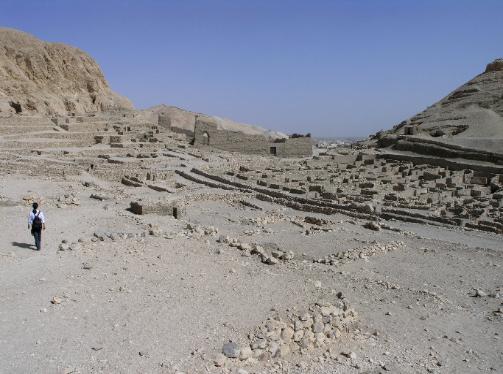|
Other Archaeological Sites / The Neolithic of the Levant (500 Page Book Online) Ancient Deir Medina
Deir el Medina was different from any other village of its time. The workmen who lived there with their families were better educated and better paid than the vast majority of their contemporaries; they were craftsmen in a land of tenant farmers; and they were administered directly by the office of the vizier. It is precisely because of its distinctive features, particularly its desert location and its inhabitants’ very exceptional rate of literacy, that we know so much about this village, but its peculiarities also mean that what we learn from Deir el Medina may not be applicable to the rest of Egypt. One assumes that the tomb builders would not have been entirely different from other Egyptians, despite the exceptional circumstances in which they lived and worked, since they interacted with their contemporaries in the outside world. If they bought and sold in the west Theban markets, intermarried with the Theban population and visited the Theban temples, then prices, marriage customs, and religious beliefs in Deir el Medina quite probably reflected those of the greater society. Of course, if they had little or no contact with the rest of the population, then the thousands of texts from the workmen’s community are much less relevant to our understanding of the New Kingdom in general (Page 41 1).
(1) Pharaoh's Workers: The Villagers of Deir El Medina by Leonard H. Lesko (1994)
|

